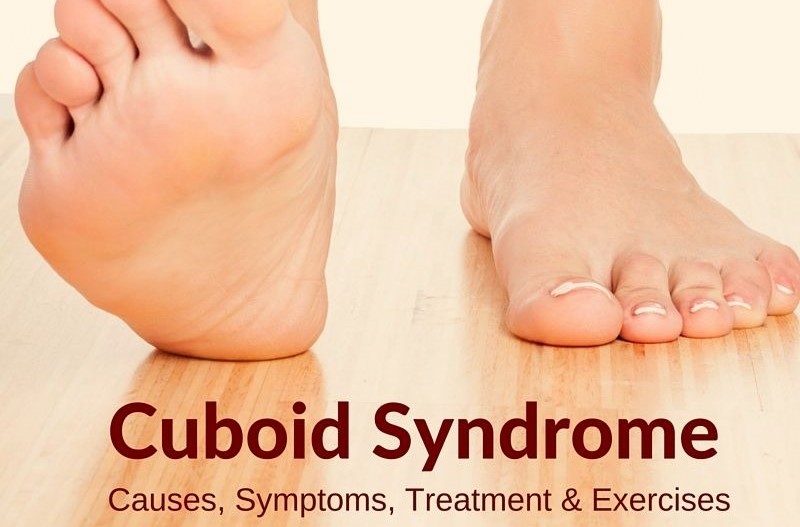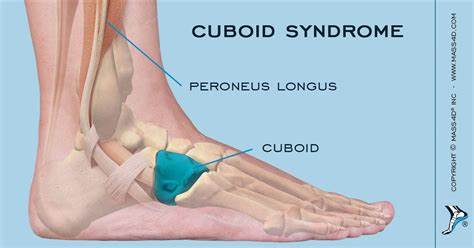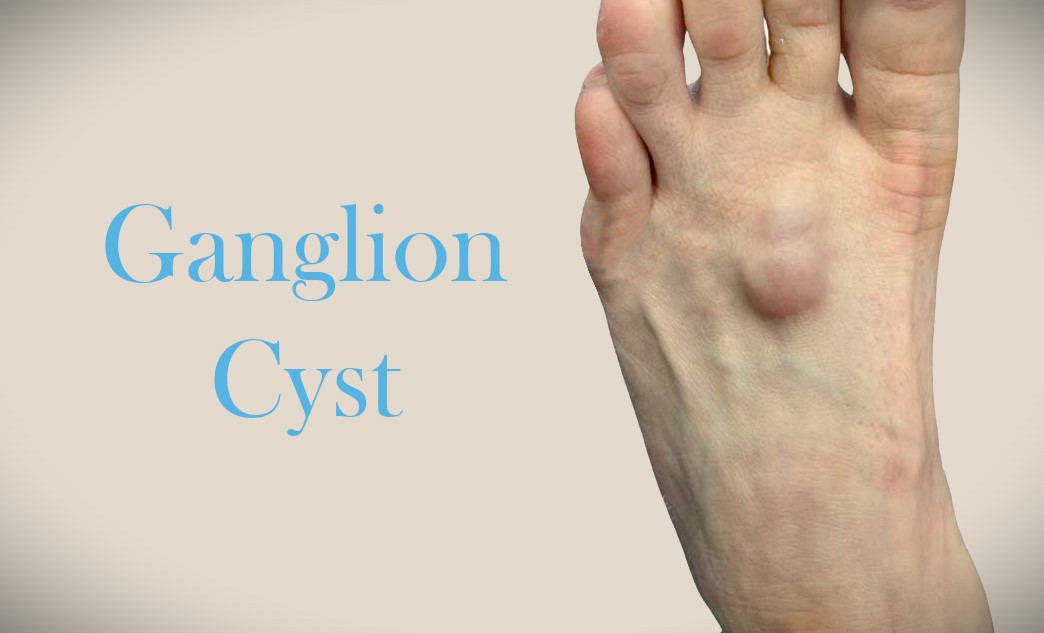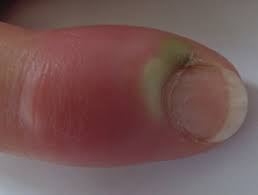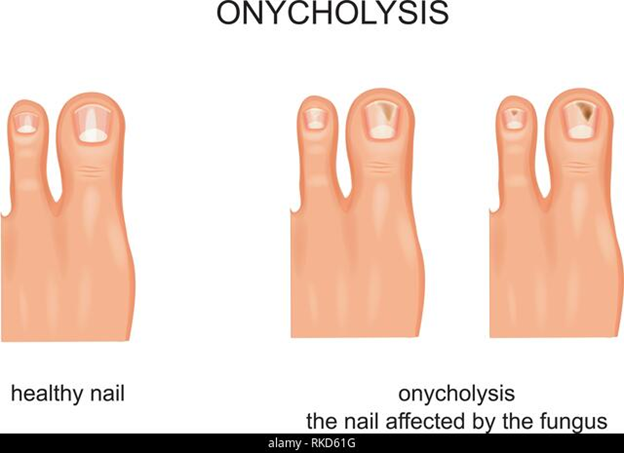Cuboid Syndrome: Causes, Prevention, and Care in Australia
Cuboid Syndrome, a prevalent issue in the sphere of foot health, is especially significant in the context of Australia’s active lifestyle. Marked by discomfort on the outer side of the foot, this condition affects a broad array of individuals, from dedicated athletes to those leading more sedentary lives. This article offers an insightful exploration of Cuboid Syndrome, examining its causes, symptoms, and effective management techniques. It serves as a comprehensive guide, providing essential information and practical steps for anyone looking to alleviate this foot ailment and achieve pain-free mobility.
What is cuboid syndrome?
Cuboid syndrome occurs when the cuboid bone – a small but crucial bone in the middle of your foot – slips out of place or becomes misaligned.
This misstep in positioning can lead to noticeable pain and discomfort along the outer part of your foot. It’s often triggered by an injury or even repetitive stress that puts the foot under strain, causing the surrounding tissues and ligaments to become irritated.
Those with cuboid syndrome might feel a sharp or dull ache on the foot’s lateral side, find it challenging to walk or bear weight, and notice swelling in the affected area.
What are the common signs and symptoms of cuboid syndrome?
When it comes to cuboid syndrome, the telltale signs are hard to miss.
The most common symptom is a pain and tenderness on the outer side of the foot, which becomes more pronounced during activities that put weight on the foot, like walking or running.
This pain might not just stay put; it can shoot towards the toes or even up the leg. If you have cuboid syndrome, you might also find it tough to move your foot and ankle around, feel like your foot isn’t as stable as it should be, and notice some swelling.
These symptoms tend to flare up with actions like walking, running, or even jumping. It’s crucial to get medical help if you’re experiencing these symptoms and they don’t seem to be improving.
What causes cuboid syndrome?
Cuboid syndrome can stem from a variety of sources. Often, it’s linked to overuse or strain on the foot and ankle, especially in activities that repeatedly stress these areas – think running, dancing, or engaging in intense sports.
Another common culprit is an ankle sprain, or even multiple sprains, which can nudge the cuboid bone out of its proper alignment.
Not to be overlooked, people with flat feet or those who frequently wear shoes that don’t provide adequate support might find themselves more susceptible to this condition. Getting a handle on these underlying causes is key to both preventing and managing cuboid syndrome effectively.
How can I prevent cuboid syndrome?
Preventing cuboid syndrome isn’t always a guaranteed win, but there are effective strategies to lower your risk.
A great starting point is choosing the right footwear. Opt for shoes that offer solid arch support and ample cushioning, especially important if you’re active. The right shoe should stabilize and protect your foot during all your physical endeavours.
Another key tactic is to avoid putting too much repetitive stress on your foot. This means adopting proper training methods and building up your activity levels gradually, rather than all at once.
Additionally, keeping a healthy weight and regularly engaging in exercises that strengthen the muscles around your foot and ankle can play a big part in keeping your feet in tip-top shape, thus fending off conditions like cuboid syndrome.”
How is cuboid syndrome diagnosed by podiatrists?
When it comes to diagnosing cuboid syndrome, podiatrists rely on a detailed physical examination.
We start by reviewing the patient’s medical history and discussing the symptoms experienced. Then, we conduct various tests to evaluate the foot’s range of motion, with a keen focus on the lateral side where the cuboid bone resides.
We may also perform specific manoeuvres to check the mobility and alignment of the cuboid bone.
To ensure a thorough diagnosis, we might request imaging tests like X-rays or MRI scans. These help eliminate other possible causes of foot pain and solidify the diagnosis of cuboid syndrome.
A comprehensive assessment by a skilled podiatrist is crucial to identify cuboid syndrome accurately and develop an effective treatment plan.
What are the conservative treatment options available for cuboid syndrome?
When it comes to treating cuboid syndrome, conservative measures are often the first line of treatment. Resting the foot and avoiding activities that exacerbate the pain is crucial.
These treatments can include
- Mobilisation techniques of the cuboid and surrounding joints
- Orthotics to correct foot position and function
- Footwear changes
- Modifying running, walking, and sporting volumes
- Exercise programs to condition affected muscles
- Ice packs or heat packs
- Topical anti-inflammatories
- Ankle stability exercises to overcome chronic weaknesses
Is surgery necessary for cuboid syndrome?
When it comes to cuboid syndrome, surgery is generally seen as a last resort. Most people find relief through non-surgical, conservative treatments. However, in cases where cuboid syndrome is particularly severe or stubborn, and conservative methods haven’t eased the discomfort, surgery might come into the picture.
The surgical approach to cuboid syndrome often involves a procedure known as cuboid bone mobilization or manipulation. In this surgery, a podiatrist makes a small incision near the problem area and manually repositions the cuboid bone to achieve proper alignment. The goal is to reduce pain, enhance foot function, and aid the healing of tissues around the bone. Surgical intervention is usually considered only after all other treatment avenues have been explored and if the condition profoundly affects the patient’s daily life and comfort.
How long does it normally take to recover from cuboid syndrome?
In most cases mild to moderate cases with appropriate interventions, cuboid syndrome can be resolved in several weeks, in more severe cases it may take several months.
We Can Help You with Cuboid Syndrome at Hurst Podiatry
Dealing with Cuboid Syndrome can be a real challenge, bringing discomfort and affecting your foot’s functionality. Getting the right diagnosis and treatment quickly is key to a smooth recovery. Here at Hurst Podiatry in Melbourne, our expert team of podiatrists specializes in providing top-notch care for those struggling with Cuboid Syndrome. We focus on conservative treatment methods aimed at easing your pain, restoring your foot’s function, and improving your overall quality of life.
Education, tailor-made treatment plans, and thorough follow-up care are at the heart of our approach. We’re committed to ensuring the long-term health of your feet and preventing the recurrence of issues. If you’re experiencing symptoms of Cuboid Syndrome or have any concerns about the health of your feet and lower limbs, don’t hesitate to reach out to us. Book a consultation at Hurst Podiatry today, and take your first step towards a more comfortable, active lifestyle.

